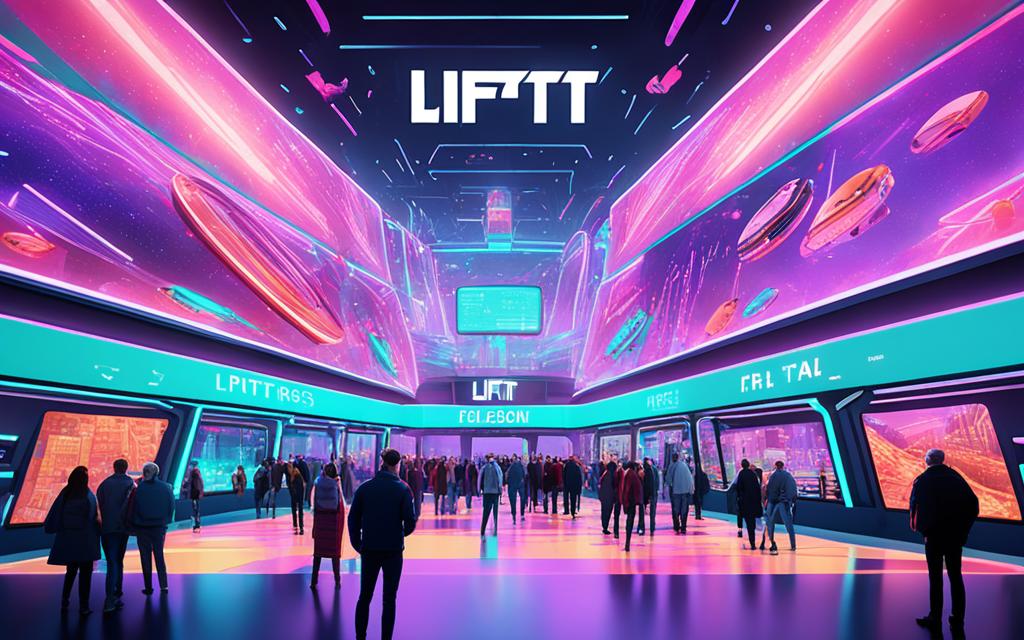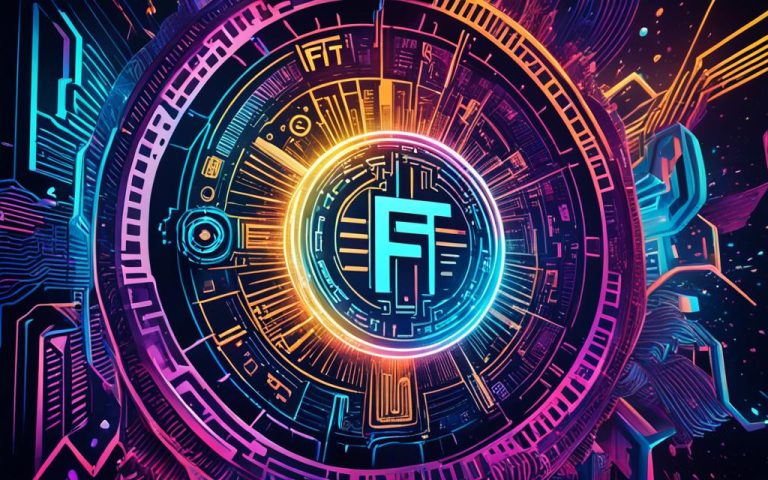The movie “Lift” is causing a buzz in the film world by highlighting NFTs. These digital items, or Non-Fungible Tokens, are changing how we think about owning digital content in movies.
“Lift” is set in a future where life is fully online. It looks at how NFTs might change the movie business. The film uses stories and visuals to show how NFTs could make movie making and watching different.
Though opinions on “Lift” vary, it has made more people talk about NFTs. The film uses NFTs in its story, making viewers think and ask questions about digital ownership in entertainment.
NFTs could be a big deal for movies, offering both the people who make them and the viewers new ways to connect. They can lead to collectibles or virtual experiences, changing our film experience.
Let’s take a closer look at NFTs in “Lift” and see how they’re changing movies.
The Role of NFTs in “Lift”
In “Lift,” NFTs take center stage, pushing the story forward. They show the power of digital art. The film circles around an NFT by the mysterious N8. It’s a live piece, blending tech and art.
Cyrus Walker, the lead, sells the NFT then plans a bold theft. This action hints at the charm of risky ventures. It ties NFTs, art, and value together tightly.
The crew steals a Van Gogh to buy the NFT. They use the NFT market to make a profit, showing how valuable these digital items can be.
Cyrus says they ‘rescue art from undeserving owners.’ This reveals a deeper goal than just money. It adds richness to the movie’s view on art and NFTs.
Art gains fame sometimes through theft, like the “Mona Lisa” did. Its theft made it world-famous.
The NFT in “Lift” jumps in value after being ‘kidnapped.’ Its price goes from $20 million to $89 million. This shows how stories can boost NFTs’ value.
“Lift” mixes art, tech, and tales, showing NFTs’ big impact. It explores how digital art changes the real and movie worlds.
For more on NFTs in “Lift,” check out The Collegian, Hive.blog, and The Architect’s Newspaper.
| Statistics | Values |
|---|---|
| Total amount NFT sold for | $20 million |
| Price thieves were happy to sell NFT for | $89 million |
| Value of the stolen art piece in London | $20 million |
| Amount of gold Jorgensen needed to fly to Zurich | Half a billion dollars worth of gold |
NFTs Transforming the Film Industry
NFTs are changing the film world in big ways. They’re impacting how movies get money, get shown, and are enjoyed. NFTs in the movie “Lift” show us that digital tokens might be cinema’s next big thing.
NFTs backing films are shaking things up, getting big deals and winning awards. For example, “The Quiet Maid,” funded by NFTs, landed a major global sales deal. This shows how NFTs offer new ways for movies to make money and reach viewers.
In March, NounsDAO said yes to an NFT film proposal. This move blends NFTs with artistic storytelling. It marks a new use for NFTs in making movies.
January was bustling with NFT film activities. An NFT movie grabbed a top award, proving the industry respects such funding. Film festivals began offering NFT VIP passes, creating special experiences for fans. This led to partnerships focused on producing films with NFTs.
NFTs are redefining movie ownership too. In “Lift,” NFTs stand for owning digital items like homes and collectibles. This sparks debates about who owns what, copyright issues, and making digital assets open to all.
“Lift” also dives into selling virtual moments and searching for where we belong. It looks at how real and digital worlds clash. The film invites us to think about the moral and social impacts of merging our lives with NFTs.
| Budget | Winning Bid for NFT Mask | Price of Stolen NFT | Award Won by NFT-funded Film |
|---|---|---|---|
| $100 million | $20 million | $89 million | $100,000 |
These numbers show NFTs’ big role in movies. With huge investments and bids for NFTs, the movie scene sees their financial potential. Also, awards for NFT movies confirm the industry’s approval of this new funding way.
NFTs are proving to be flexible and impactful in filmmaking. Their growing popularity signals a significant change in how we make and see films.
For further reading about NFTs in the film industry, check out these resources:
- NFTs in the Movie “Lift”
- Kevin Hart’s New Movie “Lift” Opens with the Heist of an
- NFTs: The Blockchain Film Funding Revolution
Conclusion
The movie “Lift” brought NFTs into the spotlight of the film world. Though the movie had mixed reactions, the NFT element caught many people’s attention. This has made many people curious about what NFTs can do beyond movies.
NFTs are getting more popular every day. Their impact on digital ownership and future industries like film is still unknown. Yet, their ability to prove who owns something digital could change how we see art, media, and fun.
It’s not clear if NFTs will shake up the film industry or be a short-lived craze. But their role in “Lift” has certainly started new discussions. We’re now waiting to see how creative minds will use NFTs. They could change how we think about owning digital content and push the limits of creativity.
FAQ
How does the movie “Lift” feature NFTs?
In “Lift,” a valuable NFT by N8 is key to the story. It’s a digital artwork, changing with live updates. It gets auctioned and stolen, making things intense.
Who is the digital artist behind the NFT in the movie “Lift”?
N8, a mysterious artist, made the NFT for “Lift.”
How does the plot of “Lift” showcase the potential of NFTs?
Cyrus Walker in “Lift” sells an NFT, then steals it back. This act raises its value and shows how NFTs can create gripping stories. It puts a spotlight on NFTs in art.
What is the significance of NFTs in the film industry?
NFTs could change film making. They help in funding and distributing movies. Films backed by NFTs have gained global attention, won prizes, and appeared at big festivals. They’re also used for selling special event passes, showing their broad impact.
How has the inclusion of NFTs in the movie “Lift” sparked discussions?
“Lift” has made NFTs a hot topic, especially in movies. Even with mixed reviews, the movie highlighted NFTs’ potential. It sparked interest in how NFTs change ownership and the future of industries, including movies.



















